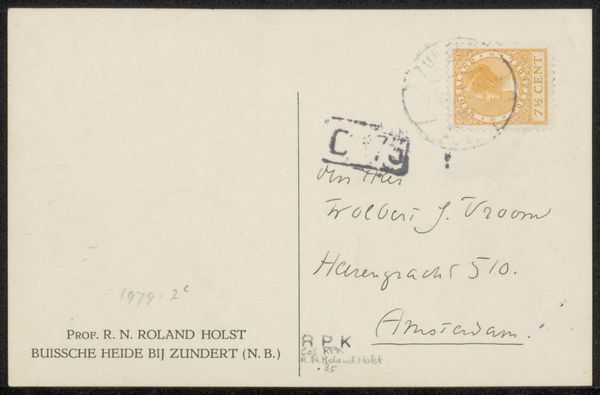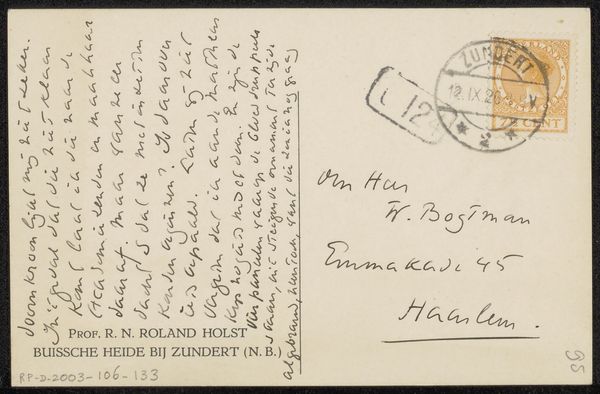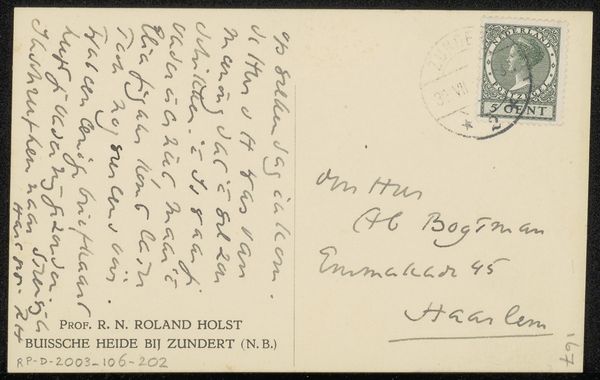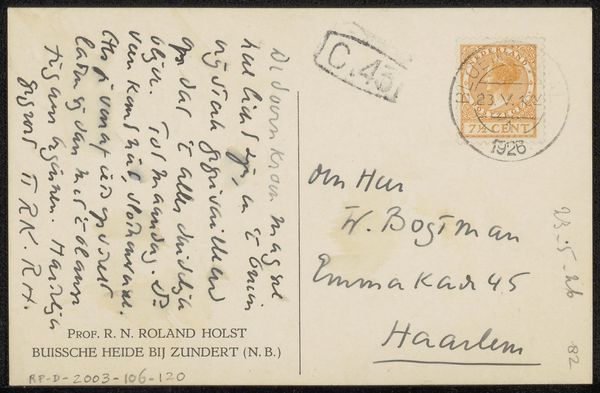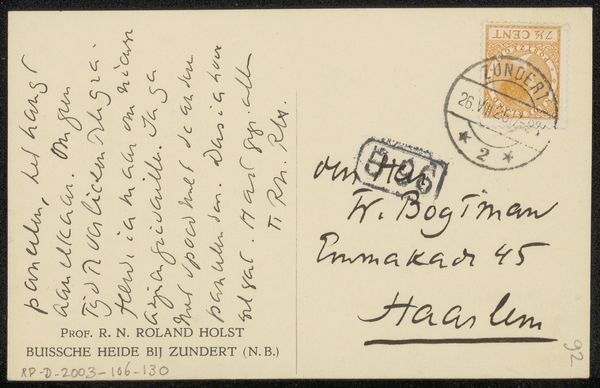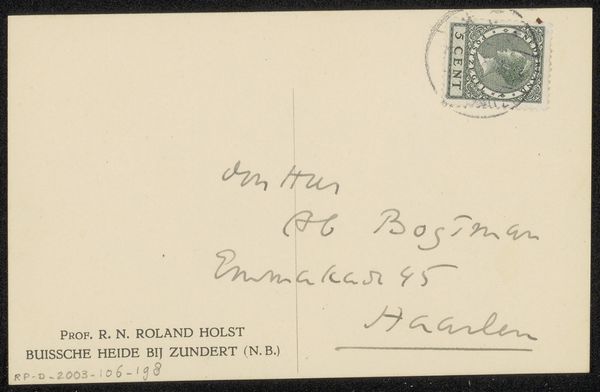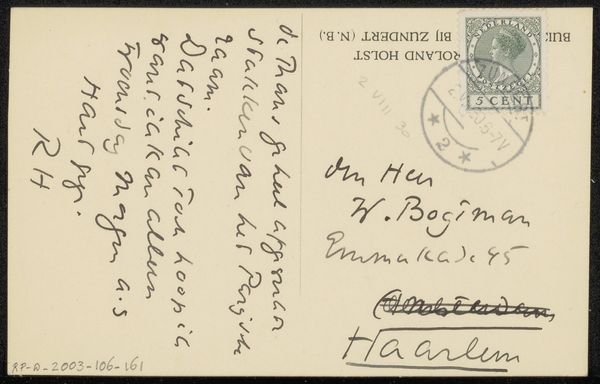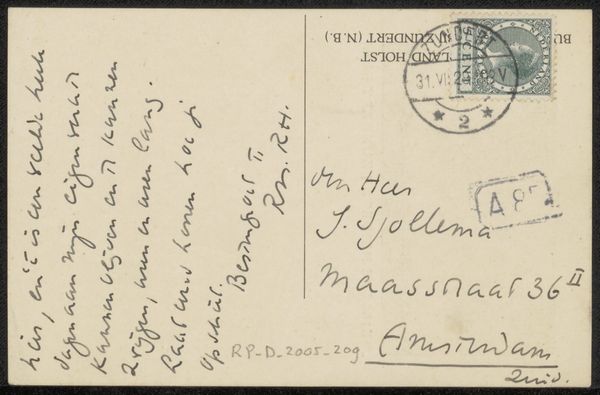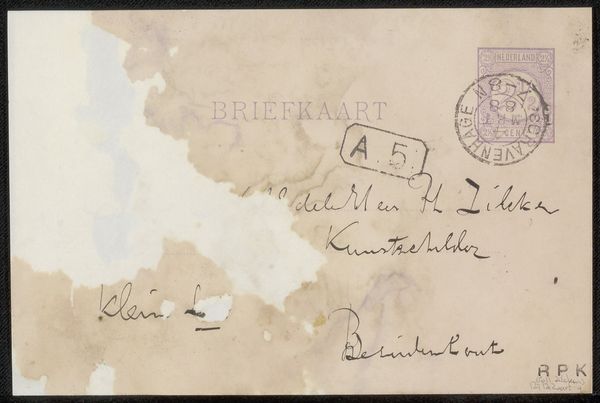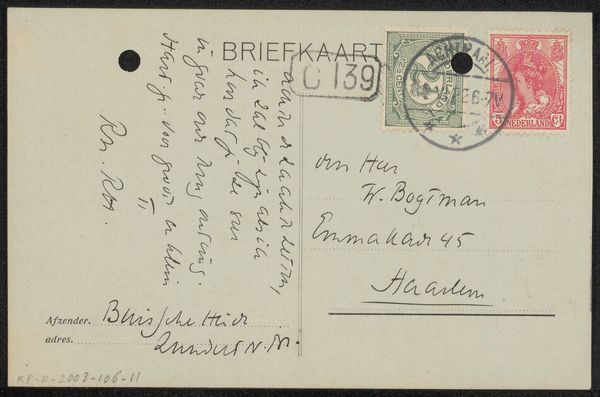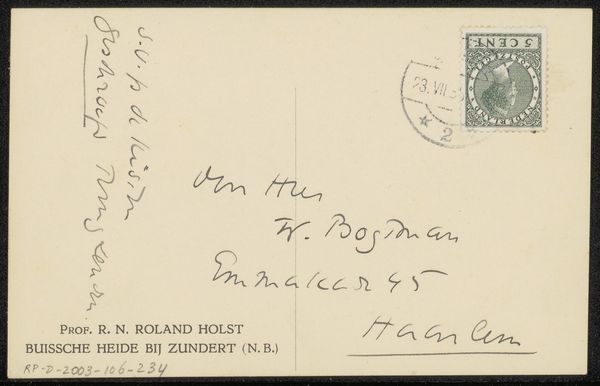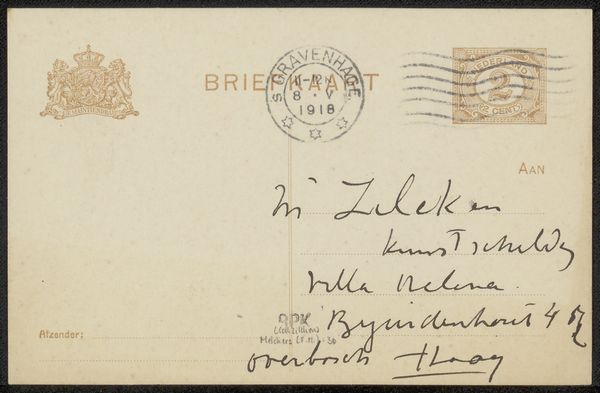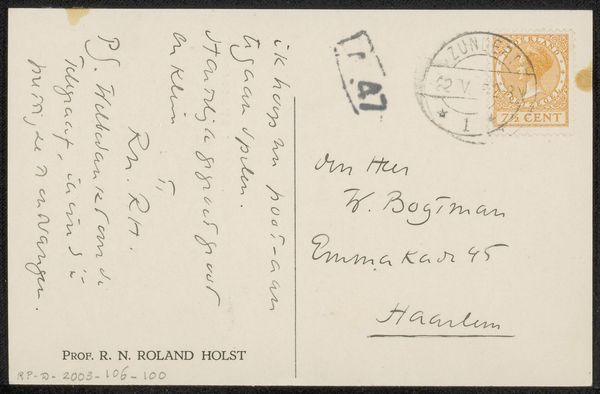
ink, pen
#
script typography
#
hand-lettering
#
hand drawn type
#
hand lettering
#
personal sketchbook
#
ink
#
hand-drawn typeface
#
pen-ink sketch
#
pen work
#
sketchbook drawing
#
pen
#
sketchbook art
#
calligraphy
Copyright: Rijks Museum: Open Domain
Curator: Richard Nicolaüs Roland Holst created this, what appears to be, the back of a postcard. It's entitled "Briefkaart aan Willem Bogtman" and dates to sometime between 1924 and 1928. It's an ink and pen work. Editor: It strikes me as intensely personal. A private missive captured in looping script, almost like a glimpse into someone's thoughts. Curator: Precisely. Note the relationship between the negative space and the density of the calligraphic forms. The rhythmic quality of the upstrokes and downstrokes gives it a distinct visual harmony. The contrast enhances legibility, even across languages. Editor: Do you think Holst's personal views at the time played a big role in why they wrote this card? How would the context of his relationships and society back then affect his ideas about beauty, function, or meaning that show up in it? Curator: Context is certainly critical, and we could consider the socio-political background and its influence on artistic intent, or look to previous works by Roland Holst to get further clues as to what may be transpiring in the work, especially to give more clarity to Roland Holst’s intent when creating such a beautiful handwritten postcard. Editor: Holst was active in socialist circles so you may be on to something there, his letter to Bogtman potentially involves some related collaboration. To go back to the aesthetics, though: how the handwritten text has been drawn here by an artistic sensibility to form new expressions in this context. Curator: Yes, considering it through the lens of structuralism might clarify that intent. The interplay between form and meaning becomes more intriguing when examined in connection with Roland Holst’s artistic circle during that era. Editor: I’ve come to think this brief visual form holds stories worth exploring and reflecting on for more meaning and beauty. Curator: Indeed, appreciating the union between craftsmanship and communication reveals levels of engagement that transcend the image itself.
Comments
No comments
Be the first to comment and join the conversation on the ultimate creative platform.
